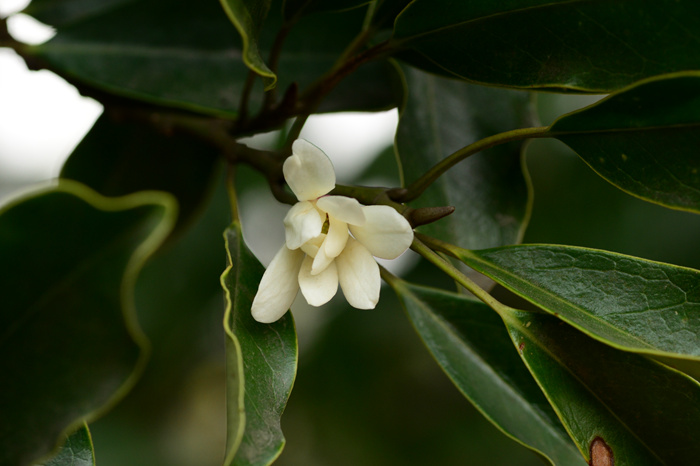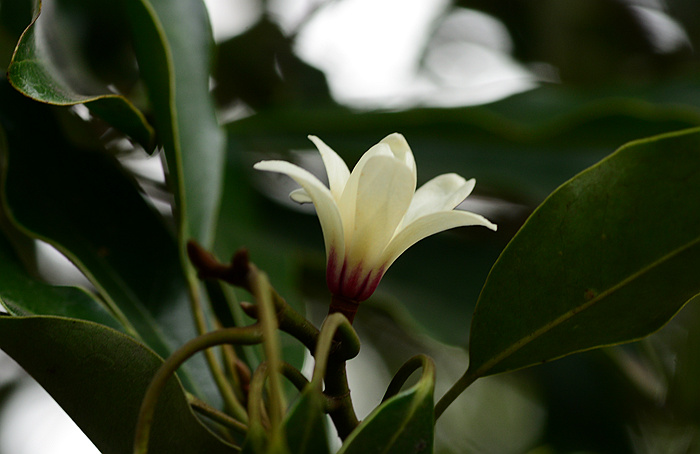台湾含笑 Magnolia compressa
- Scientific Name: Magnolia compressa Maxim.
- Ref: Bull. Acad. Imp. Sci. Saint-Pétersbourg, sér. 3, 17:417. 1872
- Synonyms:
- Magnolia formosana (Kaneh.) Yonek.
- Michelia compressa (Maxim.) Sarg.
- M. compressa var. formosana Kaneh.
- M. compressa var. lanyuensis S.Y.Lu
- M. cumingii Merr. & Rolfe
- M. formosana (Kaneh.) Masam. & Suzuki
- M. parviflora Merr.
- English Common Name: Formosan michelia
- Chinese Common Name: 台湾含笑 Táiwān hánxiào, 台湾白兰花 Táiwān báilán∙huā, 乌心石 wūxīn∙shí, 鲈鳗 [闽南]ló-muá
- Japanese Common Name: オガタマノキ [小賀玉木] ogatamanoki,
- Family: Magnoliaceae
- Genus: Magnolia
- Distribution: Evergreen broad-leaved forests; 200-2600 m. Taiwan [S Japan, Philippines].
- Photo: 03/06/2016, Botanical Garden Memorial Sun Yat-Sen, Nanjing, Jiangsu
Trees, to 17 m tall, to 1 m d.b.h. Bark grayish brown, smooth. Axillary buds, young twigs, petioles, and leaf blade midvein with brown appressed short trichomes. Petiole 0.8-1.2 cm, without a stipular scar; leaf blade obovate-elliptic to narrowly elliptic, 5-7 × 2-3 cm, thinly leathery, secondary veins 8-12 on each side of midvein, reticulate veins sparse, slightly prominent on both surfaces when dry, base cuneate, apex acute, acumen obtuse to sharp. Brachyblasts 6-7 mm, appressed pubescent, with 1 or 2 bract scars. Flower buds golden yellow appressed sericeous. Tepals 12, pale yellowish white to pale reddish near base, narrowly obovate, 12-15 × 3-5 mm. Stamens ca. 45, 5-6 mm; connective exserted and forming a 1-1.8 mm long tip; anthers 3.5-4 mm, dehiscing laterally. Gynophore ca. 3 mm; gynoecium ca. 4 mm, with golden yellow fine trichomes. Fruit 3-5 cm; mature carpels ellipsoid to ovoid, 1.5-2 × 1.1-1.4 cm, dehiscing dorsally, apex mucronate. Seeds 2-4 per carpel, pink. Fl. Jan, fr. Oct-Nov. 2n = 38. (Flora of China)

03/06/2016, Botanical Garden Memorial Sun Yat-Sen
